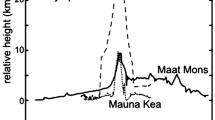Abstract
The Valley of Mexico and surrounding regions of Mexico and Morelos states in central Mexico contain more than 250 Quaternary eruptive vents in addition to the large, composite volcanoes of Popocatépetl, Iztaccíhuatl, and Nevado de Toluca. The eruptive vents include cinder and lava cones, shield volcanoes, and isolated andesitic and dacitic lava flows, and are most numerous in the Sierra Chichináutzin that forms the southern terminus of the Valley of Mexico. The Chichináutzin volcanic field (CVF) is part of the E-W-trending Mexican Volcanic Belt (MVB), a subduction-related volcanic arc that extends across Mexico. The crustal thickness beneath the CVF (∼50 km) is the greatest of any region in the MVB and one of the greatest found in any arc worldwide. Lavas and scoriae erupted from vents in the CVF include alkaline basalts and calc-alkaline basaltic andesites, andesites, and dacites. Both alkaline and calc-alkaline groups contain primitive varieties that have whole rock Mg#, MgO, and Ni contents, and liquidus olivine compositions (≤Fo90) that are close to those expected of partial melts from mantle peridotite. Primitive varieties also show a wide range of incompatible trace element abundances (e.g. Ba 210–1080 ppm; Ce 25–100 ppm; Zr 130–280 ppm). Data for primitive calc-alkaline rocks from both the CVF and other regions of the MVB to the west are consistent with magma generation in an underlying mantle wedge that is depleted in Ti, Zr, and Nb and enriched in large ion lithophile (K, Ba, Rb) and light rare earth (La, Ce) elements. Extents of partial melting estimated from Ti and Zr data are lower for primitive calc-alkaline magmas in the CVF than for those from the regions of the MVB to the west where the crust is thinner. The distinctive major element compositions (low CaO and Al2O3, high SiO2) of the primitive calc-alkaline magmas in the CVF indicate a more refractory mantle source beneath this region of thick crust. In contrast, primitive alkaline magmas from the CVF and other regions of the MVB show compositional similarities to intraplate-type alkali basalts erupted behind the arc in the Mexican Basin and Range province. These similarities are consistent with the hypothesis that slab-induced convection in the mantle wedge beneath the MVB causes advection of asthenospheric mantle from behind the arc to the region of magma generation. Trace element systematics of primitive magmas in the MVB reveal substantial variability in both the extent of mantle wedge enrichment by subduction processes and in the composition of mantle heterogeneities that are related to previous extraction of alkaline to sub-alkaline basaltic melts.
Similar content being viewed by others
Author information
Authors and Affiliations
Additional information
Received: 23 June 1998 / Accepted: 23 December 1998
Rights and permissions
About this article
Cite this article
Wallace, P., Carmichael, I. Quaternary volcanism near the Valley of Mexico: implications for subduction zone magmatism and the effects of crustal thickness variations on primitive magma compositions. Contrib Mineral Petrol 135, 291–314 (1999). https://doi.org/10.1007/s004100050513
Published:
Issue Date:
DOI: https://doi.org/10.1007/s004100050513




